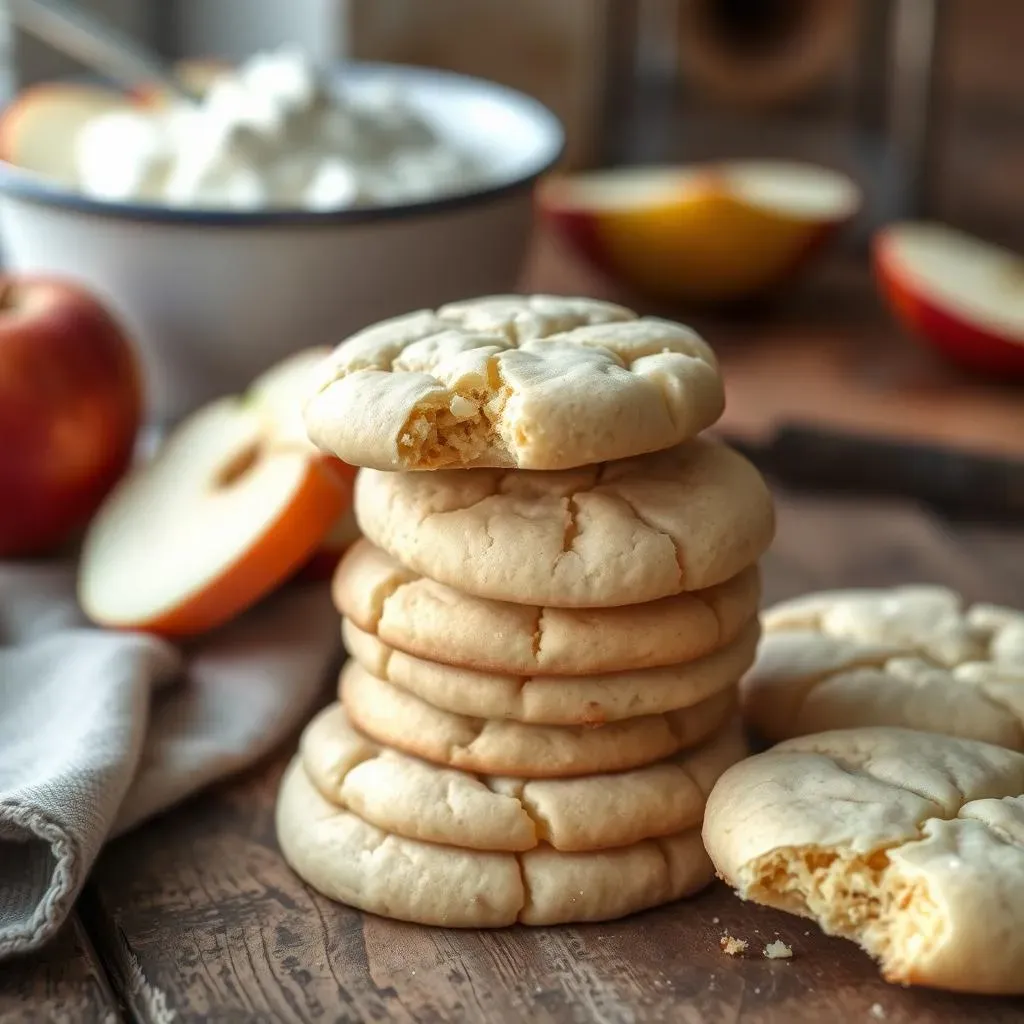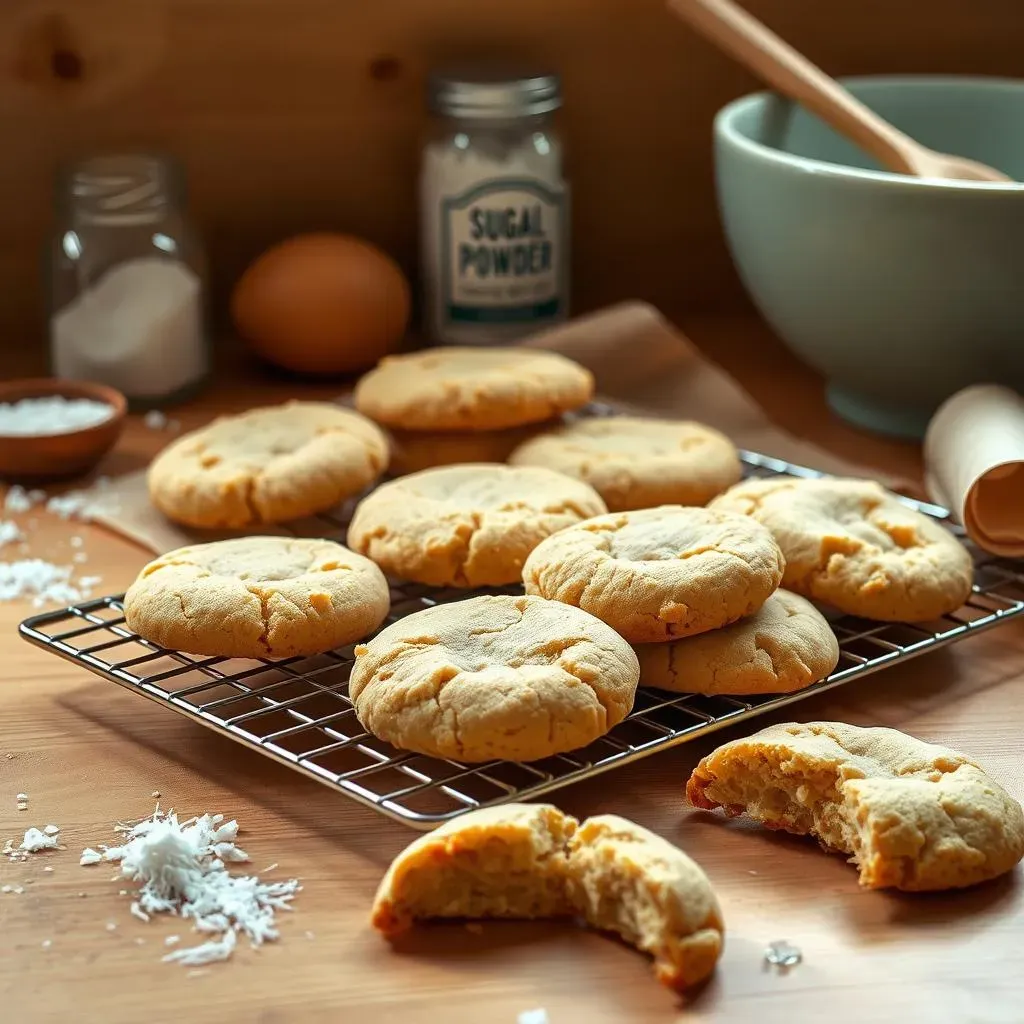Table of Contents
Ever find yourself dreaming of soft, sweet sugar cookies but dreading the extra calories? You're not alone! I used to think that a truly satisfying sugar cookie meant a boatload of butter and sugar. But guess what? It's totally possible to enjoy those classic flavors without the guilt. This article is your guide to mastering the art of the low fat sugar cookies recipe. We'll break down the science behind healthier baking, ensuring you get that perfect texture and taste, all while keeping the fat content down. We’ll explore the core recipe, and I'll share my secret to keeping them buttery without tons of butter and some crucial tips to make your baking experience a success. We'll even touch on fun variations, so you can customize your cookies for any occasion. Get ready to bake some seriously delicious, guilt-free treats!
Understanding LowFat Baking for Sugar Cookies

Understanding LowFat Baking for Sugar Cookies
The Science of Swaps
Okay, so you want to make a low-fat sugar cookie, right? It's not about just yanking the fat out and hoping for the best. It's about understanding what fat does in baking. Fat, like butter, makes cookies tender and moist. It helps with that melt-in-your-mouth feeling. When you cut it back, you need to find clever ways to maintain that desirable texture. We're talking about swapping some fat for things like applesauce or yogurt. These ingredients add moisture without the heavy fat content. It's like a magic trick but with baking science, not smoke and mirrors.
Think of it like this: fat is like the comfy couch in your cookie's living room. We're not getting rid of the couch, just trading it for a slightly less plush one. It still needs to be comfy, right? We also need to consider how sugar acts in cookies. It's not just for sweetness; it helps with browning and texture. So, when we reduce the fat, we might need to play with the sugars a bit too. It’s all about balance, like a seesaw, you adjust one side, the other side changes.
Ingredient | Role in Cookies | Low-Fat Alternative |
|---|---|---|
Butter | Tenderizes, adds moisture, flavor | Applesauce, Greek Yogurt, Butter Extract |
Sugar | Sweetens, browns, texture | Honey, Stevia |
Navigating the Texture Maze
One of the biggest challenges with low-fat baking is keeping the cookies from turning into hockey pucks. Nobody wants a hard, dry sugar cookie. The key is moisture. That's why those alternative ingredients are so important. We're looking for ingredients that can provide that moisture without adding the fat. It’s also about how we handle our dough. Over-mixing can develop the gluten in the flour, making your cookies tough. I know, it sounds like a lot of fuss, but trust me, it makes a world of difference.
Also, keep in mind that low-fat cookies might bake a bit differently. They might spread less, or they might brown faster. It’s like they have their own quirky personality. You'll need to keep an eye on them in the oven and adjust your baking time as needed. I always suggest doing a test batch first, just to get a feel for how your oven and the dough are behaving. It's better to learn on a few cookies than on a whole tray. You wouldn’t jump in a pool without testing the water first, would you?
- Moisture is key! Use alternatives like applesauce or yogurt.
- Don't overmix your dough.
- Keep an eye on the baking time, low-fat cookies can be unpredictable.
Mastering the Low Fat Sugar Cookies Recipe

Mastering the Low Fat Sugar Cookies Recipe
The Core Recipe: Your Starting Point
Alright, let's get to the fun part: baking! You've got the science, now let's talk about the actual low fat sugar cookies recipe. Think of this as your basecamp before we start adding in all sorts of fun variations. We're going to use a mix of white whole wheat flour for a bit more fiber, melted butter (just a tiny bit!), and a combo of honey and stevia for sweetness. The key is to not overdo it with the butter. We melt it to make it easier to incorporate, and we use a butter extract to give the cookies that iconic buttery taste we all love, without all the fat. It’s like a sneaky flavor upgrade. It’s a game changer.
You'll start by whisking together your dry ingredients, making sure everything is nicely combined. Then, you’ll mix in the wet ingredients, being careful not to overmix. Once the dough comes together, you will chill it. This step is crucial. Chilling the dough makes it easier to roll out and prevents the cookies from spreading too much in the oven. It’s like giving the dough a little nap before the big bake. I know, waiting is hard, but it’s worth it. Trust me. Once chilled, roll out the dough, cut out your shapes, and bake until they're golden brown. It’s simple, but the results are amazing.
Ingredient | Amount | Notes |
|---|---|---|
White Whole Wheat Flour | 2 cups | Can substitute with all-purpose or gluten-free blend |
Melted Butter | 2 tablespoons | Unsalted |
Honey | 1/4 cup | Adds sweetness and moisture |
Stevia | 1/4 cup | Or other sweetener |
Vanilla Extract | 1 teaspoon | Adds flavor |
Butter Extract | 1/2 teaspoon | For that buttery flavor |
Step-by-Step Baking Guide
Okay, let’s walk through the baking process step-by-step. First, in a large bowl, whisk together your flour, baking powder, and salt. This ensures everything is evenly distributed. Next, in a separate bowl, mix together your melted butter, honey, stevia, vanilla extract, and butter extract. Now, slowly add the wet ingredients to the dry ingredients, mixing until just combined. Do not overmix. Overmixing leads to tough cookies, and we want tender, melt-in-your-mouth goodness. Once the dough has come together, form it into a disk, wrap it in plastic, and chill in the fridge for at least 30 minutes, or even better, an hour.
When your dough is chilled, preheat your oven to 350°F (175°C). Lightly flour your work surface and roll out the dough to about 1/4 inch thick. Use your favorite cookie cutters to cut out shapes. Place the cookies on a baking sheet lined with parchment paper. Bake for 8-10 minutes, or until the edges are golden brown. Let the cookies cool on the baking sheet for a few minutes before transferring them to a wire rack to cool completely. This prevents them from breaking. And that’s it! You just baked some amazing low-fat sugar cookies! Wasn't that awesome?
- Whisk dry ingredients together.
- Mix wet ingredients separately.
- Combine wet and dry, don't overmix.
- Chill the dough.
- Roll, cut, and bake!
Tips, Tricks, and Variations for Your Low Fat Sugar Cookies

Tips, Tricks, and Variations for Your Low Fat Sugar Cookies
Making Your Cookies Extra Special
So, you've got the basic low fat sugar cookies recipe down, but what about taking it to the next level? Baking is all about experimenting and finding what works best for you. Let's talk about some tips and tricks to make your cookies truly shine. One thing I always do is add a pinch of sea salt to my dough. It might sound weird, but it enhances the sweetness and brings out the flavors. It’s like adding a tiny sparkle. Also, make sure you're using fresh baking powder. Old baking powder can lead to flat cookies, and nobody wants that. It’s the little details that make a big difference, like making sure your butter is properly melted but not too hot, or that you’re measuring your flour correctly. It’s like a science experiment in the kitchen, but a tasty one.
Another great tip is to use parchment paper or a silicone baking mat. This prevents your cookies from sticking and makes cleanup a breeze. And for the ultimate cookie experience, try rolling your dough between two sheets of parchment paper. This ensures a smooth, even thickness and prevents the dough from sticking to your rolling pin. It's like giving your dough a spa day. It’s a small thing but it makes all the difference. Don’t skip the step of letting them cool on the pan for a few minutes before moving them, this will stop them from breaking into pieces. It's like letting them rest after a hard workout.
Tip | Why It Works |
|---|---|
Pinch of Sea Salt | Enhances flavors |
Fresh Baking Powder | Ensures proper rise |
Parchment Paper/Silicone Mat | Prevents sticking |
Cool on Pan | Prevents breakage |
Fun Flavor Variations
Now, let's get creative with variations! Once you have the basic low fat sugar cookies recipe down, the possibilities are endless. One of my favorite things to do is add different extracts. Almond extract gives a lovely nutty flavor, while lemon extract adds a bright, citrusy note. It’s like giving your cookies a mini makeover. You can also add spices like cinnamon or nutmeg for a warm, cozy feel, especially during the holidays. Or, get adventurous and add a bit of orange zest for a zesty twist, It’s like an explosion of flavor in your mouth.
And let's not forget about toppings! Sprinkles are always a fun option, especially if you're baking with kids. But you can also get a bit fancier. Try adding chopped nuts, dried fruit, or even a drizzle of melted chocolate after the cookies have cooled. You could even make a simple glaze with powdered sugar and a bit of milk or lemon juice for a touch of elegance. It's like dressing up your cookies for a party. The most important thing is to have fun and experiment. Baking is all about expressing yourself, and with these low-fat sugar cookies, you can do it guilt-free! Remember, the kitchen is your playground, so go wild!
- Add different extracts (almond, lemon, etc.)
- Incorporate spices (cinnamon, nutmeg)
- Top with sprinkles, nuts, or dried fruit
- Make a simple glaze
